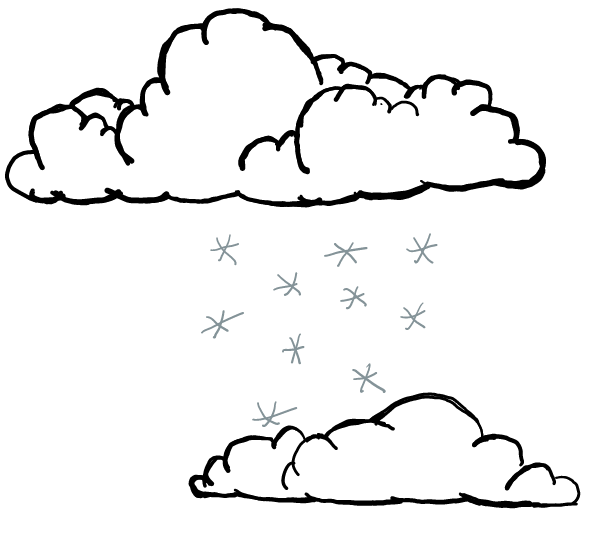Project Description
The MAMiP (Multilayer Arctic MIxed-Phase clouds) project, funded by the BMBF is a collaboration between KIT in the group of Prof. Dr. Corinna Hoose and Leipzig University (https://fob.uni-leipzig.de/public/details/forschungsprojekt/6590).
The main goal of this project is to study multilayer Arctic mixed-phase clouds using a modelling approach. The twin project is MAMiP:O, stationed at Leipzig University, where they focus on the observational aspect as well as statistics. Multilayered clouds, shown in Figure 1, are ovelapping clouds that interact on multiple levels. In the high Arctic they have a high occurrence (~50\% (prel. P. Achtert)), comparable to the tropics, and almost double compared to midlatitudes. The clouds affect each other as well as the surface radiatively which could have a large impact on the Arctic climate as clouds in general warm the surface due to the reflective surface reducing the cooling effect of clouds. On a smaller scale these clouds interact microphysically, an upper cloud (most commonly ice) precipitating can lead to seeding of the lower cloud. This is called the seeder-feeder mechanism and under the right conditions will lead to glaciation and enhanced precipitation of the lower cloud. This is one of the mechanisms that will be studied during this project. Furthermore, the Arctic environment is thought of as "pristine" in regards to aerosols (no local sources of pollution). This makes it perfect for investigating aerosol effects on these clouds. Using a submodule to ICON, the ART (Aerosol and Reactive Trace gases) module developed at KIT, aerosol emissions and transport from the ocean can be simulated and used to establish a baseline for the condensation cloud nuclei (CCN) content in the Arctic. The CCN concentration can then be manipulated as well as the standardised ice nuclei particle (INP) concentration that are mostly in charge of creating ice clouds. The aerosol effect on these cloud systems can thus be studied in great detail using the model. Through this project we hope to shed some light on the formation, persistence and effects of multilayered clouds in the high Arctic.
Publications and Dissertations:
Wallentin, G. L.
2025, März 4. Karlsruher Institut für Technologie (KIT). doi:10.5445/IR/1000179667
Wallentin, G.; Oertel, A.; Ickes, L.; Achtert, P.; Tesche, M.; Hoose, C.
2025. Atmospheric Chemistry and Physics, 25 (13), 6607–6631. doi:10.5194/acp-25-6607-2025

